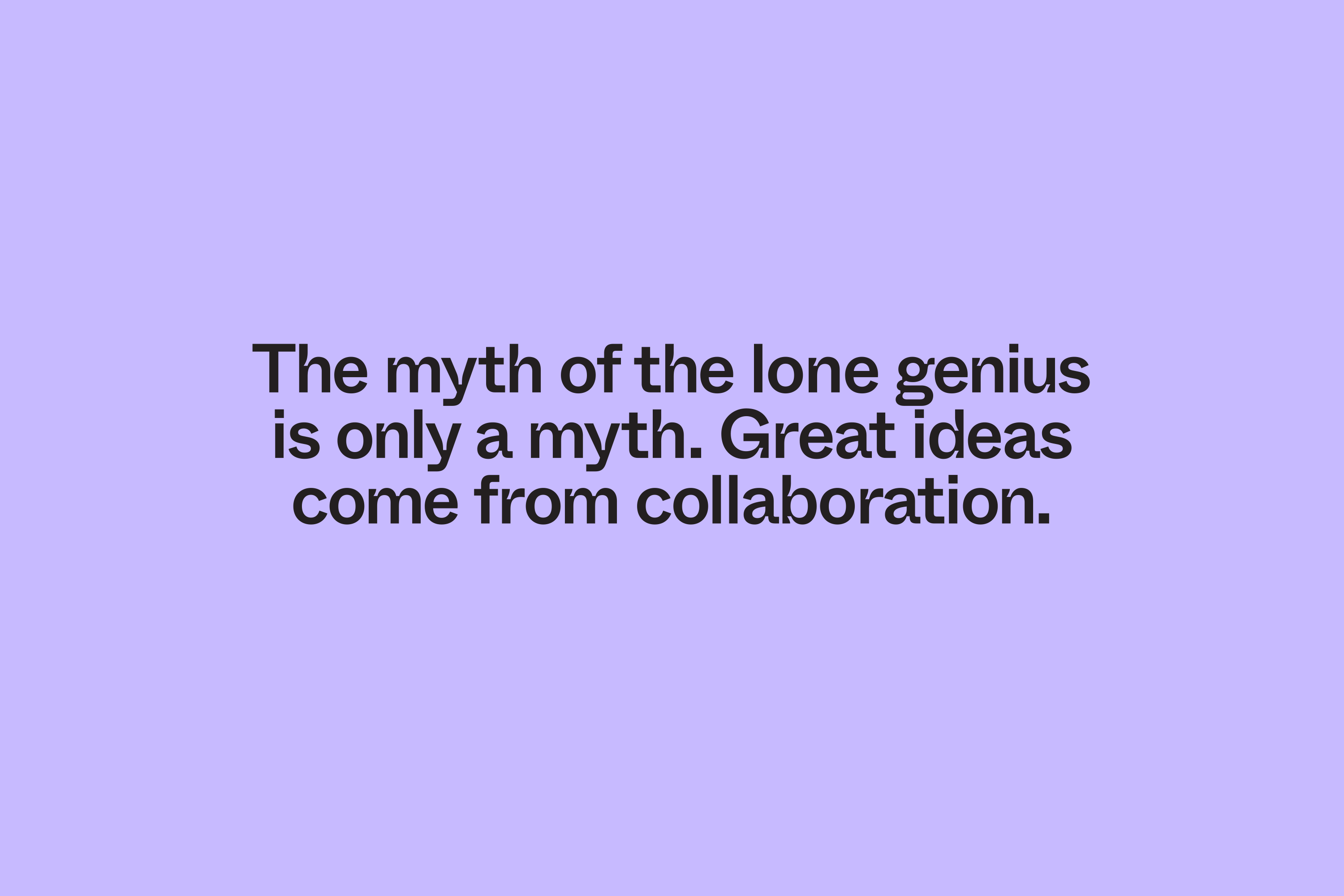
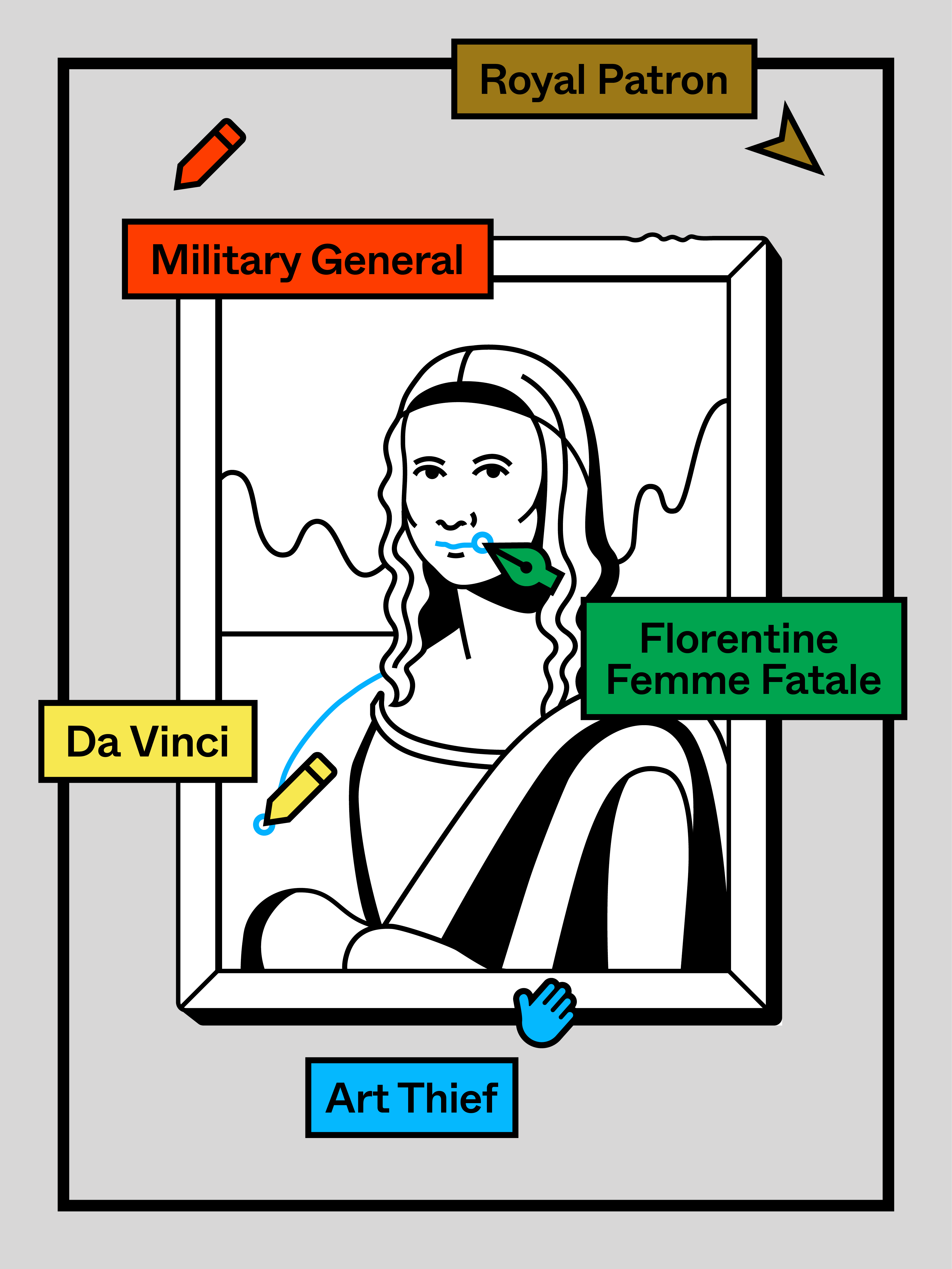
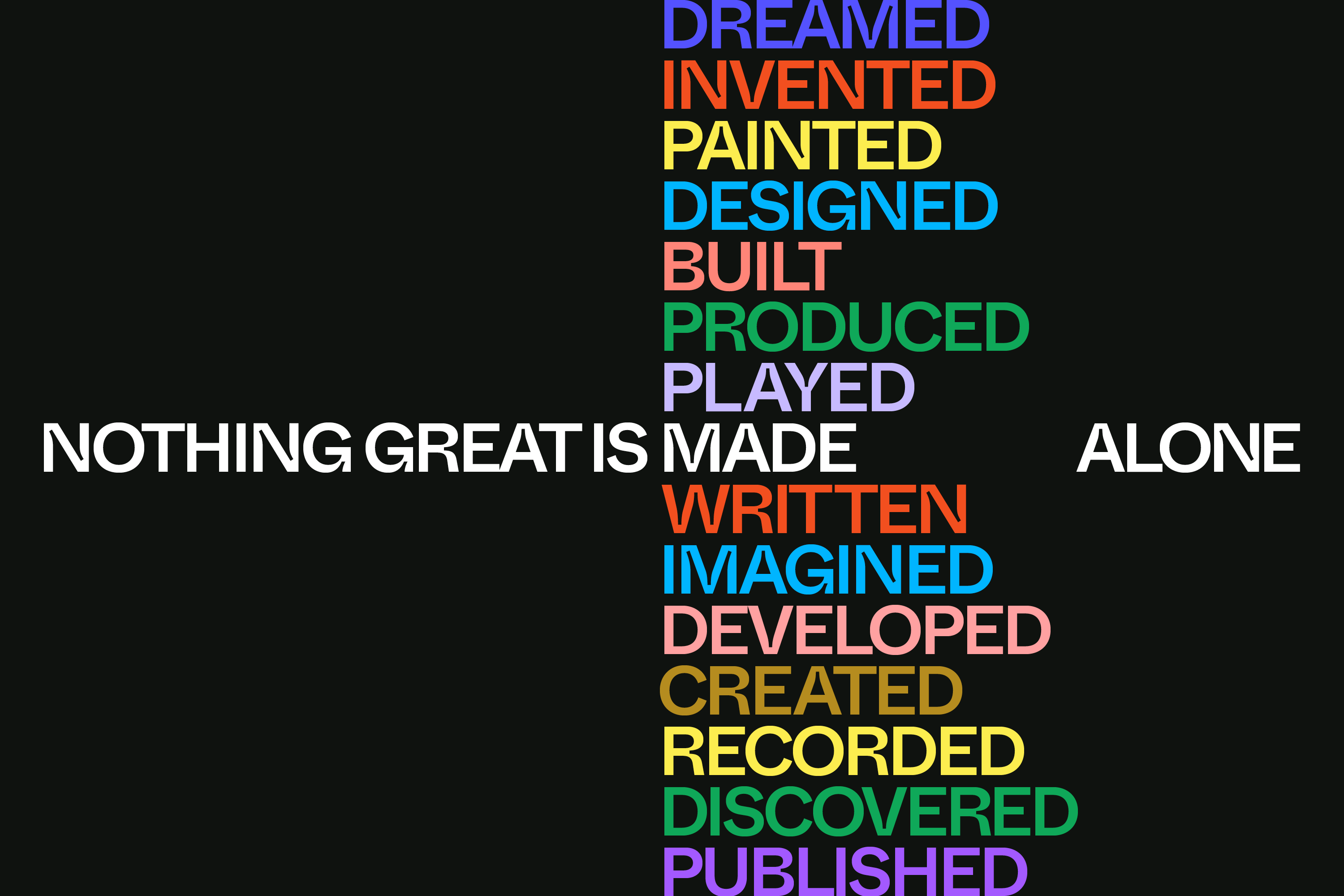
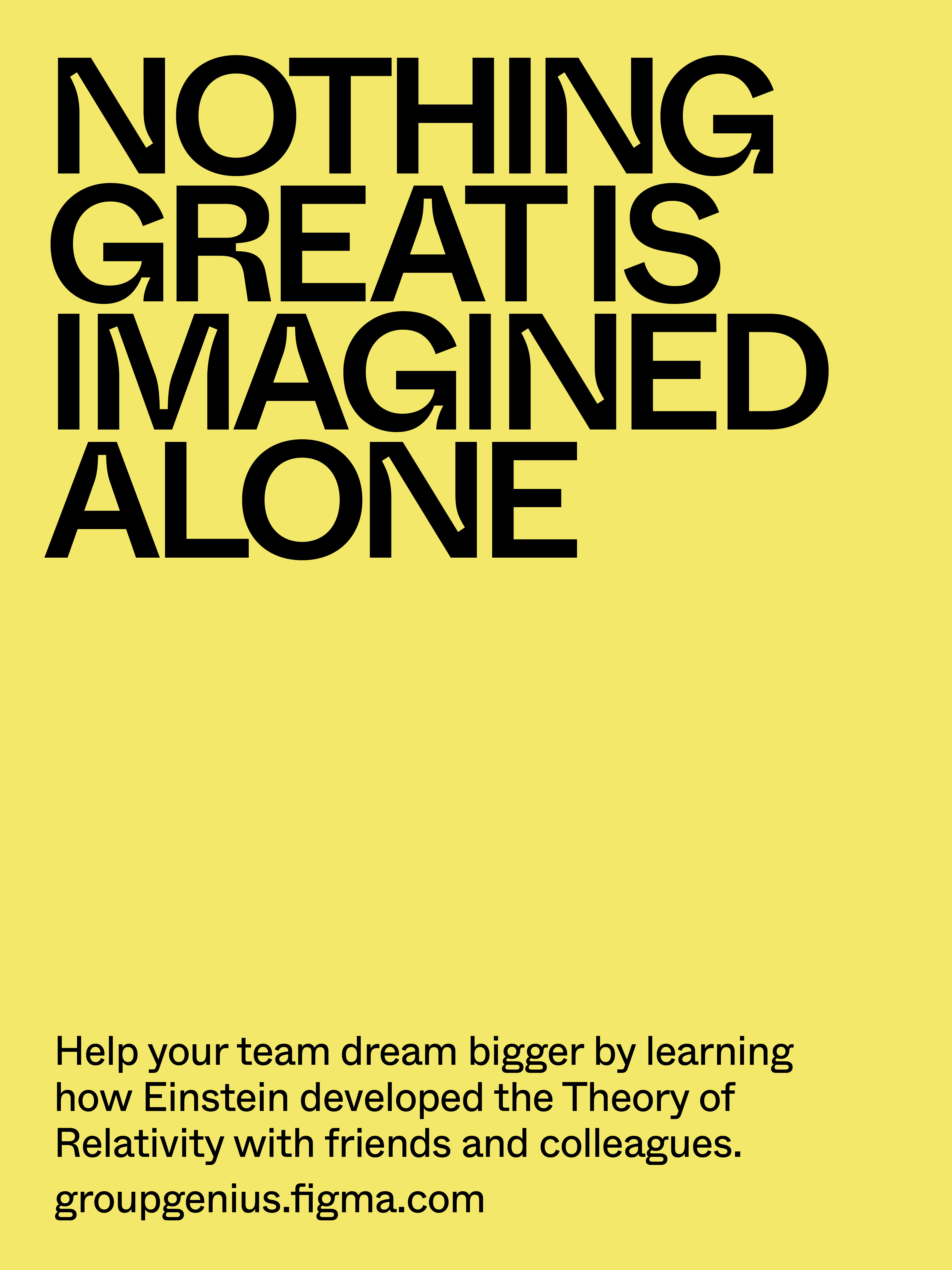
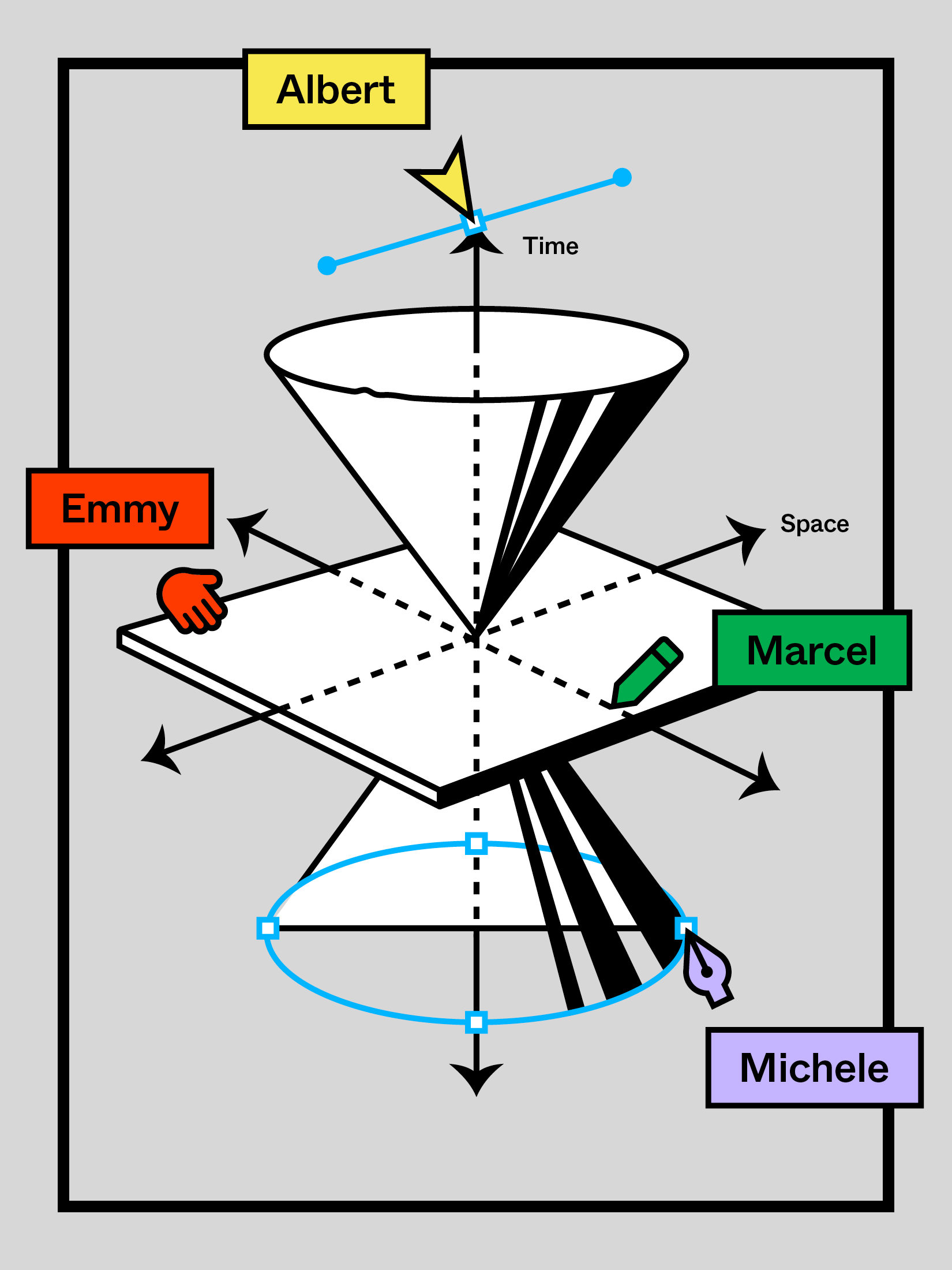
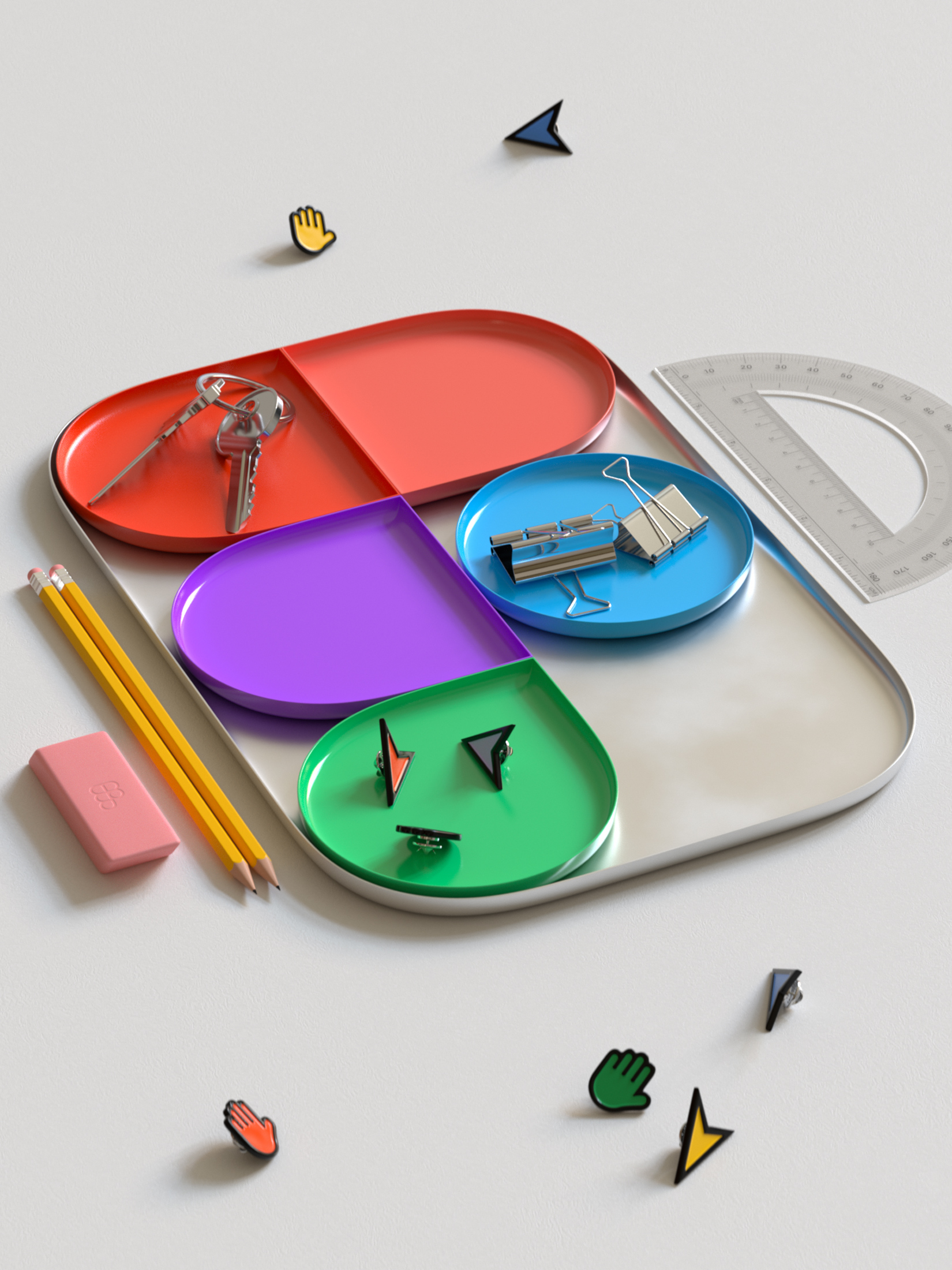
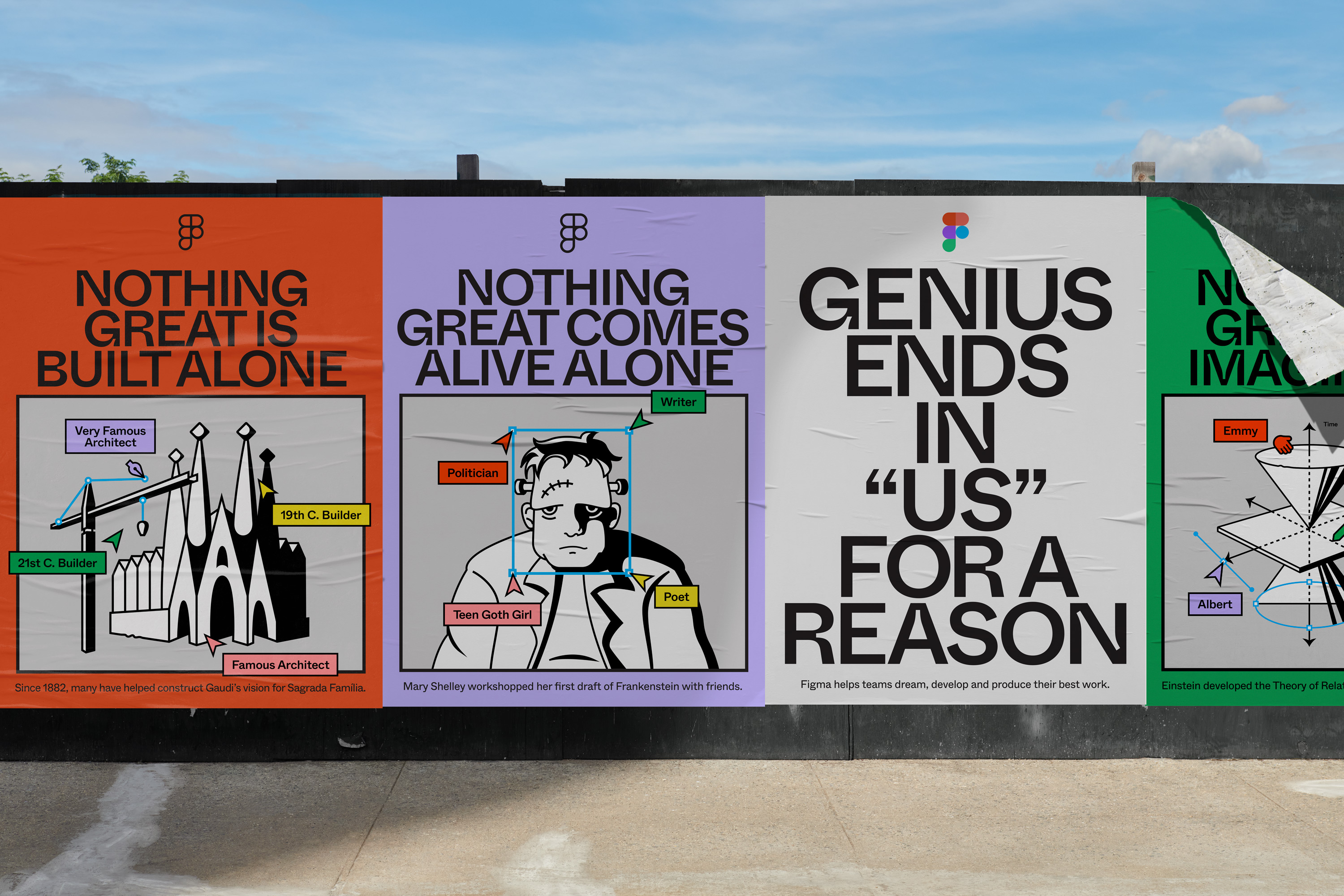
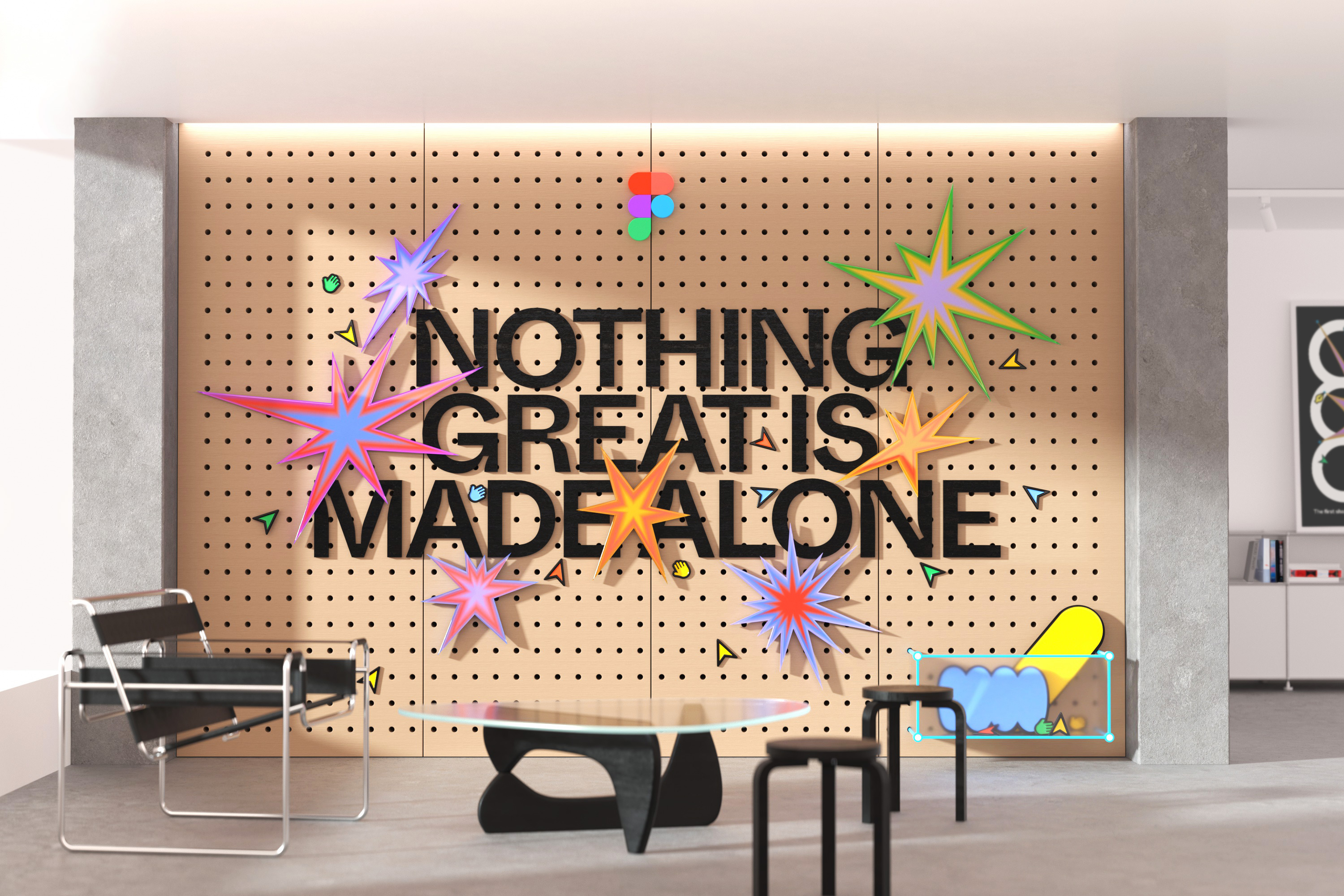
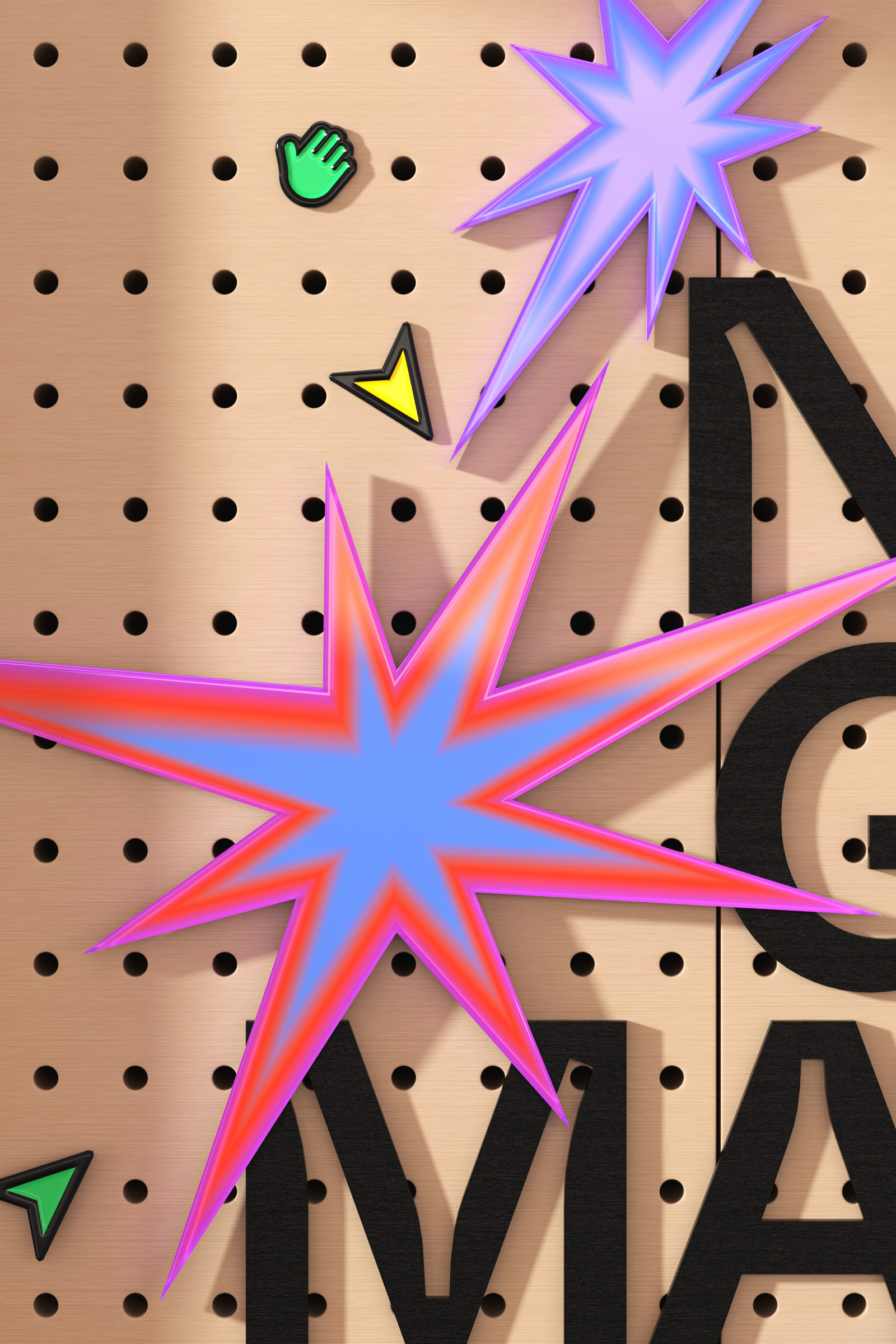
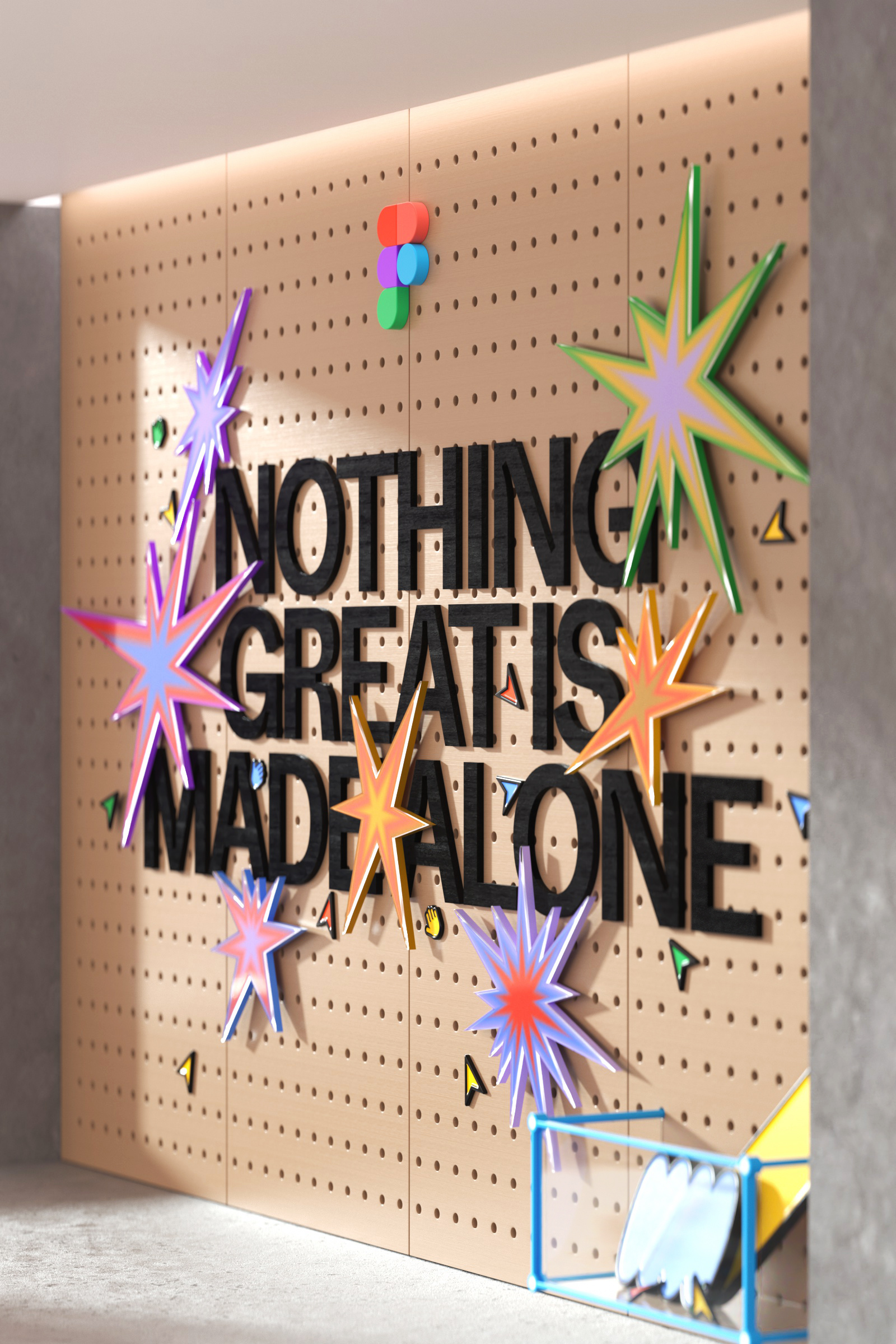
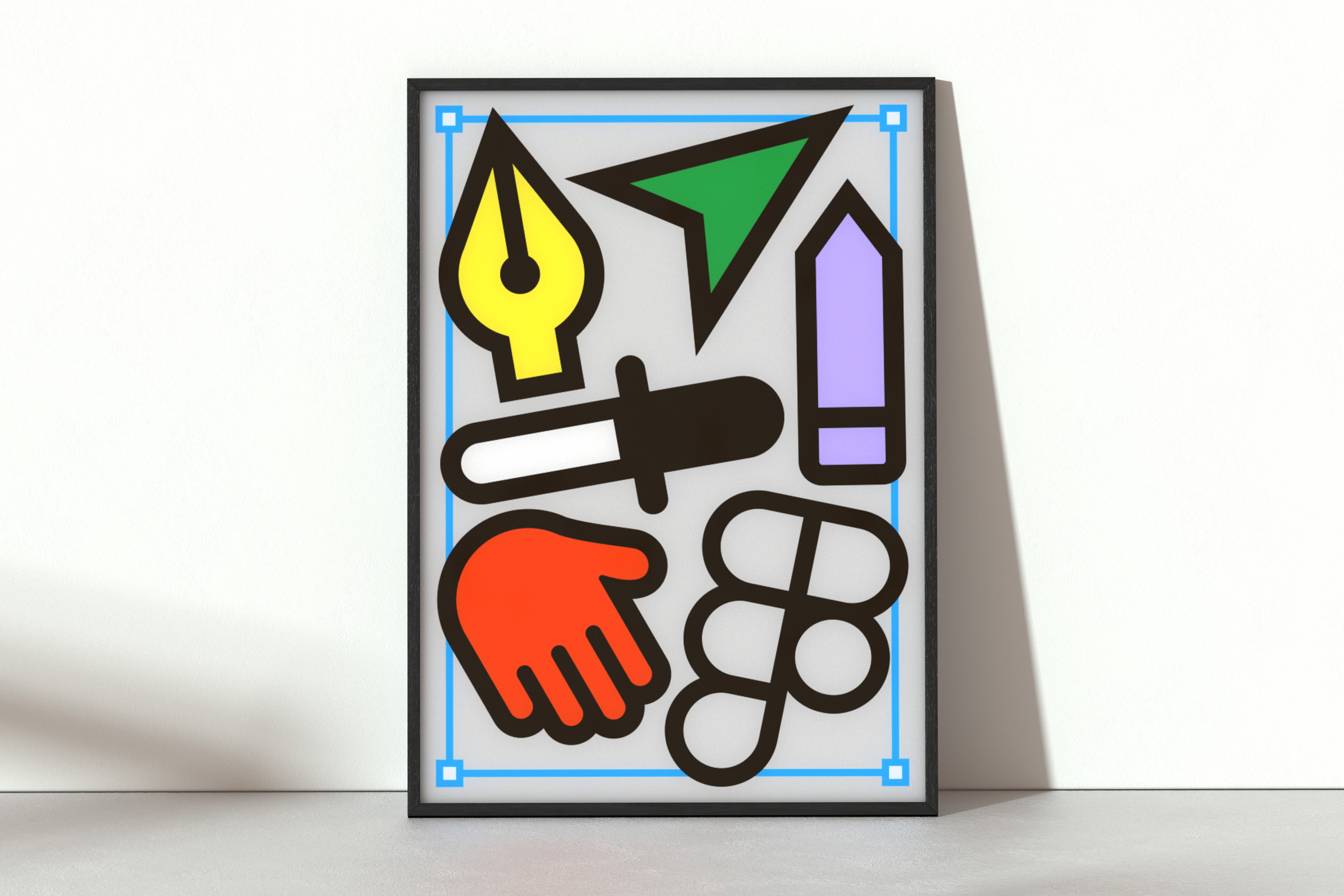
Most people agree that two heads are better than one. We inherently understand that different perspectives give us a better chance to come up with a creative idea than working alone.
Yet, you always hear the names of individuals when you ask people who they think were behind world-famous inventions and works of art. But, it’s not really surprising.
For the longest time, we’ve been told to focus on the one signature at the bottom of a painting. The one author on the spine of a book. The one inventor in a Netflix biopic. The one scientist in a Wikipedia description of a discovery.
Call it the Myth of the Lone Genius. The story we’re told about how great ideas come from one inspired mind—even though day-to-day life makes it clear that the best ideas spring from the creative power of teamwork.
Figma has been fighting this myth in design circles since they started. By developing the first web-based group design tool, they forced companies to reconsider their creative hierarchies and processes. What had been a top-down workflow—designers handing off their ideas to developers, producers and writers—became a level playing field where ideas improved because more people had a seat at the table.
THE CHALLENGE
It’s not hyperbole to say Figma has fans, not just customers. They’ve been thoroughly embraced by web and product designers, their visual identity is widely recognized in those communities, and their brand elements have scaled with the company’s growth.
But if it takes everyone on a team to turn a good idea into a great one, Figma had to start inviting them all to the table—the developers, producers, writers and others who work with designers every day. While Figma makes it possible for all of them to brainstorm and create in real-time, many of them still didn’t know they could—or should—start working that way.
Figma asked COLLINS to help craft a brand story and campaign that would debunk the Myth of the Lone Genius and get everyone from the intern to the C-suite collaborating on their platform.
THE SOLUTION
In true Figma fashion, we worked closely with our clients on a shared Figma board. Ideas would spring up, bounce around, and land in a better place than where they started.
During these collaborations, we realized that Figma’s brand truth was also a universal one—Nothing Great Is Made Alone. As a brand and campaign line, it gave us a rallying cry and a way to prove that what makes something a work of genius is never the work of one lone genius.
To build our case, we developed work that talked about the creative benefits of teamwork, explained how great things were made, and directly debunked the lone genius myths we grew up with.
All of these communications showed non-designers how important they were in coming up with great design ideas—and how Figma was created specifically to include them and their skill sets.
While “Nothing Great Is Made Alone” wasn’t made alone, Figma has made it their internal and external story to successfully stand apart from their competitors. We can’t wait to see what other things they make with it next.